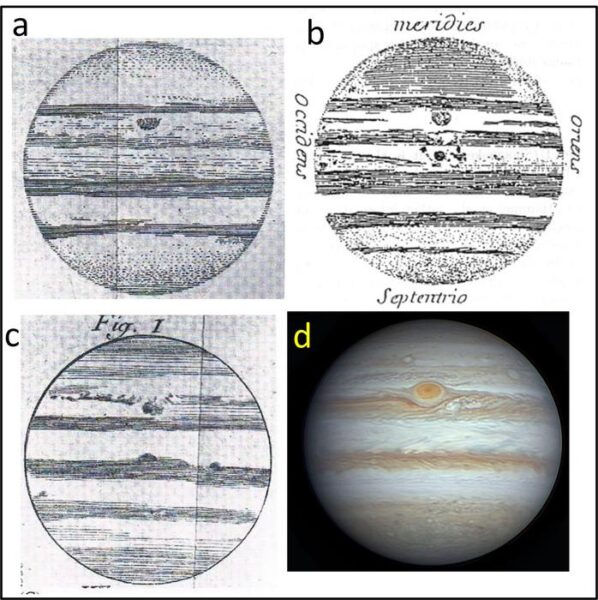Jupiter’s Great Red Spot, the largest known planetary vortex in the solar system, is likely not the same one observed by astronomer Giovanni Domenico Cassini in 1665, according to a new study. Researchers from the University of the Basque Country in Spain suggest that the iconic feature formed at least 190 years ago, making it the longest-lived vortex known in the solar system.
The study, published in the AGU journal Geophysical Research Letters, used historical observations from the 17th century onward and numerical models to explain the longevity and nature of this spectacular phenomenon. The findings also suggest that the Great Red Spot likely formed due to an instability in Jupiter’s intense atmospheric winds, producing a long, persistent atmospheric cell.
“From the measurements of sizes and movements, we deduced that it is highly unlikely that the current Great Red Spot was the ‘Permanent Spot’ observed by Cassini,” said Agustín Sánchez-Lavega, the lead researcher of the study. “The ‘Permanent Spot’ probably disappeared sometime between the mid-18th and 19th centuries, in which case we can now say that the longevity of the Red Spot exceeds 190 years.”
Exploring the Formation of the Great Red Spot
To investigate how this immense vortex could have formed, the researchers carried out numerical simulations using two models of the behavior of thin vortices in Jupiter’s atmosphere. The results indicate that a cell-producing wind instability could have generated a “proto-Great Red Spot” that then shrank over time, giving rise to the compact and rapidly rotating Great Red Spot observed in the late 19th century.
The study also reported that the Red Spot, which was 39,000 kilometers (about 24,200 miles) at its longest axis in 1879, has been shrinking to about the current 14,000 kilometers (8,700 miles) and simultaneously becoming more rounded. Recent observations from instruments aboard the Juno spacecraft have revealed that the Great Red Spot is shallow and thin, providing useful information for scientists looking to explore the spot’s formation.
Future Research on the Great Red Spot’s Fate
The researchers aim to reproduce the Great Red Spot’s shrinking over time in future studies to elucidate the physical mechanisms underlying the spot’s relative stability. They also hope to predict whether the Great Red Spot will disintegrate and disappear when it reaches a size limit, as might have occurred to Cassini’s Permanent Spot, or whether it will stabilize at a size limit at which it may last for many more years.
“It has been very motivating and inspiring to turn to the notes and drawings of Jupiter and its Permanent Spot made by the great astronomer Jean Dominique Cassini, and to his articles of the second half of the 17th century describing the phenomenon,” Sánchez-Lavega said. “Others before us had explored these observations, and now we have quantified the results.”
The study’s findings shed new light on the age and formation of Jupiter’s Great Red Spot, providing valuable insights into the dynamics of the gas giant’s atmosphere and the longevity of its most iconic feature.


